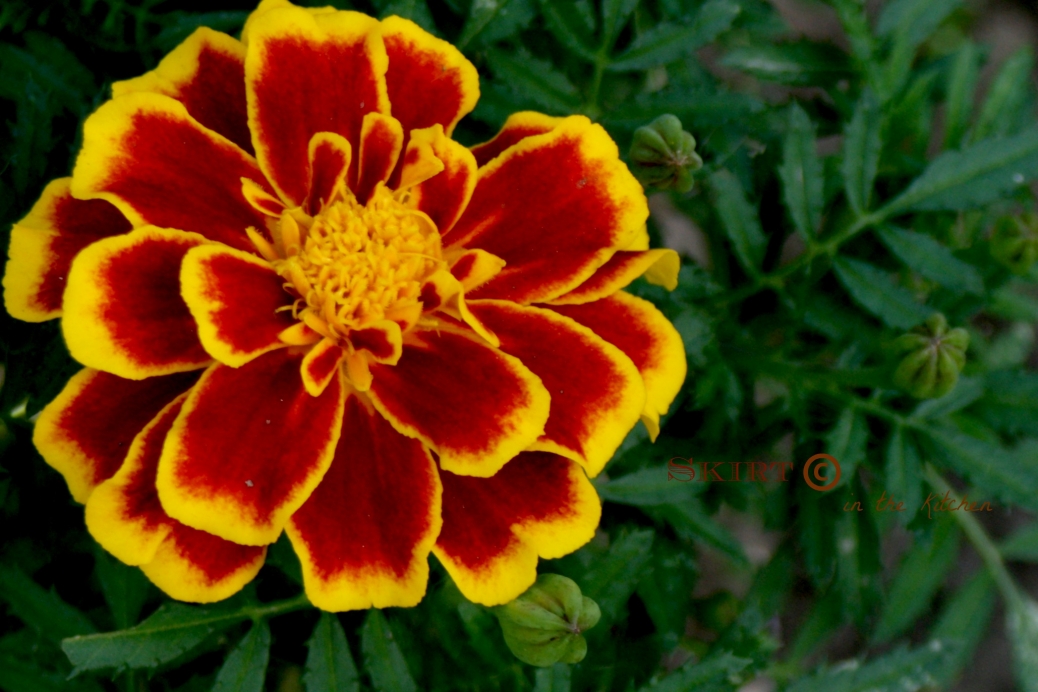
I’ve played in the flower garden all summer long, now into fall days. I like how the sun sets on everything differently, each season bringing forth a new light.
I planted by seed several different kinds of marigolds; mainly, the French marigold. It seems to be my favorite in the marigold family. This one pictured, is the Mexican Marigold. You could say it is my second favorite among the marigolds. I’ve raised the standard marigolds, plus, the African marigold flowers-I like how large they are in their lemony blooms. I love having a variety of marigolds for different uses of enjoyment. No matter how elegant flowers can be, the many varieties of them, I still find Marigolds fascinating and just as pretty.


Different names for marigolds: Mary bud, Golds, Pot marigold, Holigold, Ruddes, Gold bloom, Gardin marigold.
Marigolds are vital in the protection against different cancers and promotes growth of new blood vessels as well as new skin tissue for topical usage in cases of external wounds and skin irritations. Marigold blooms and their leaves are a blood purifier. The marigold is a highly intelligent flower! It is truly an herb.
The Mexican marigold, Tagetes Lucida, has the slight flavor of the spice, anise. The leaves are like a tarragon flavor. They could be used for a tarragon substitute in soups and casseroles, and in other dishes-dried or fresh. There is just as much nutrition in the leaves as there is in a marigold flower, if not more. 

sun lovin’
I harvested some Mexican marigold and would like to make tea. Is every part of the flower usable? Many of the petals were eaten by something, leaving the stigmas where the pollen produces. I saved those parts as well as the few petals I could and the leaves. I harvested the seeds for next year. Will the stigmas cause the tea to be bitter or should I just use the petals and leaves?
Jeannie, I owe you a HUGE apology!–I just NOW, basically 1 1/2 months later, happen to see your message to me! I am very sorry, my apology to you…I’ve been away from my blog for travel recently. To answer and converse with you, your interest in marigolds, I equally adore the Mexican as well as the French for this incredible flower! I prefer using just the petals; and yes, stigmas included–in tea, in savory foods, salads, as well as adorning a cake! I don’t find it as fascinating incorporating the green parts; For salads, oh, man, what a joy to include the entire flower, stem, leaves, and all! Not to mention, very healthy for us. To answer your question about the stigmas–no, I did not find my teas to be bitter when including the stigmas. I realize that everybody has their own taste and preferences. I love all of this flower, so what can a nature girl say otherwise! I hope you’ve had a wonderful Thanksgiving with your family. May your Christmas be a blessing to all of you, as well; good health and love sent your way. Thank you for writing to me, much appreciated. ~SLN